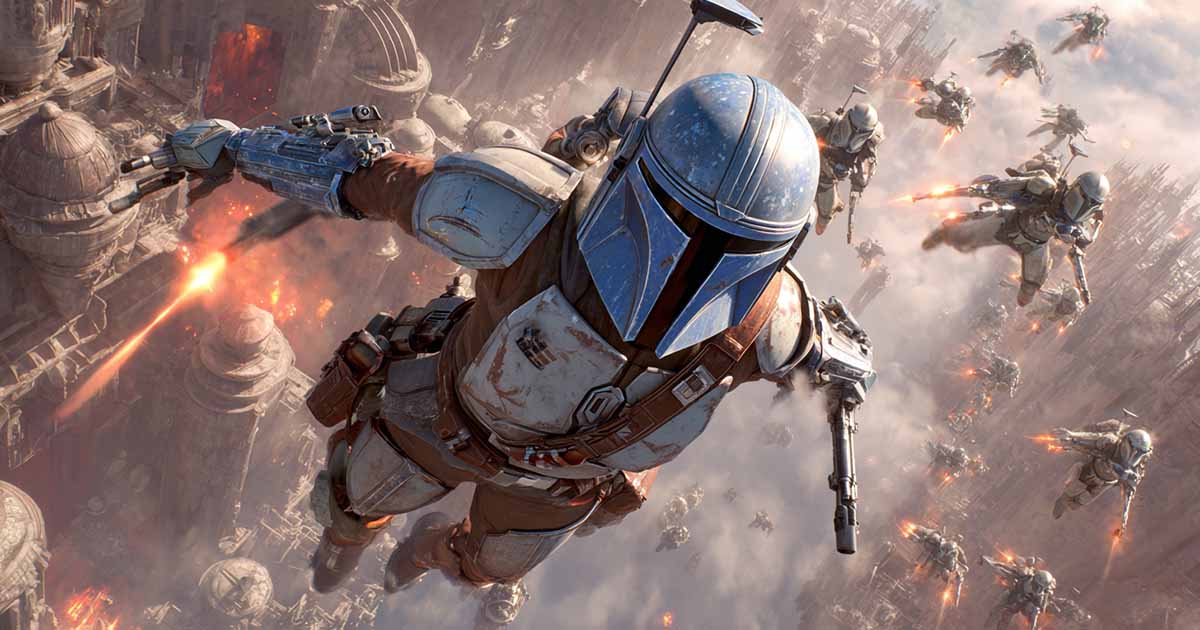Why Mandalorians Revere Their Armor
Discover why Mandalorians hold their armor sacred, how beskar and creed shape their identity, and why this ancient warrior tradition remains one of the most powerful symbols in "Star Wars."

Among the warrior cultures in science fiction, few have earned the same respect as the Mandalorians from "Star Wars." Their armor defines them. It is not a costume or simple tool of war. It is the foundation of their identity and the visible sign of who they are.
Iron Skin and Family Legacy
In Mandalorian life, armor is called beskar'gam. The word means "iron skin," and it represents both body and soul. Each plate is forged, worn, repaired, and handed down through generations. It carries memory. To lose it is to lose one's name and place among the clans. The armor binds the living to their ancestors.
Armor is never uniform. Every suit is unique, reflecting the history of the warrior who wears it. A dent in a helmet marks a duel survived. A scar across the chest plate records the heat of battle. Some helmets bear symbols of clan or creed, while others remain plain, honoring simplicity and function. Each suit is both weapon and storybook, preserving the history of a people who refuse to forget.

The Sacred Metal
The metal itself deepens the reverence. Beskar is the sacred heart of Mandalorian craftsmanship. It can withstand blaster fire and resist a Jedi's lightsaber.
To the Mandalorians, this strength is not only physical but moral. It mirrors their belief that a man must stand firm in the face of greater powers. The forge is their temple, and each hammer strike is a prayer of endurance.
In "The Mandalorian," Din Djarin's new armor made of pure beskar marks a turning point in his life. When the Armorer forges it, the scene carries a sense of rebirth. Each plate reflects not vanity but redemption.
Through the fire and the anvil, Din Djarin becomes more than a bounty hunter. He becomes a man of creed, restored by the same tradition that raised his people from ruin.

The Creed and the Mask
The creed itself binds armor to identity. "This is the Way" serves as a vow of obedience, loyalty, and restraint. For some, the helmet must never be removed in the presence of others. To break that rule is to shatter trust with both clan and self. The mask hides the face but reveals the soul, a constant reminder that duty is greater than comfort.
Not all Mandalorians hold to that strict path. Bo-Katan Kryze and her followers believe that the creed should bend with circumstance. They remove their helmets without shame, trusting that honor lives in action rather than ritual. Their disagreement with traditionalists reflects an ancient struggle within Mandalorian history—the battle between belief and survival.
A Home Worn on the Back
The obsession with armor is not rooted in pride alone. It is born from hardship. Mandalore itself was broken by endless war and imperial devastation. Its people were scattered across the galaxy.
In exile, the armor became their homeland. Wherever a Mandalorian stood, his armor carried the memory of Mandalore. To wear it was to belong, even when the planet was lost.

Faith Forged in Fire
That is why the image of a Mandalorian remains so powerful. The armor is not a symbol of domination but of endurance. It stands for courage in a faithless galaxy and for loyalty when others falter.
Strength, for a Mandalorian, is not found in a weapon or machine but in the discipline that keeps him true. His armor is his vow, his heritage, and his hope.
The Mandalorians remind us that identity must be built, tested, and reforged. Their armor is proof that tradition can survive the fire of change. It is faith made metal, carried proudly across a galaxy that often forgets what honor means.

